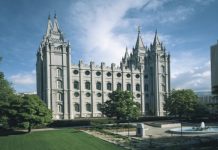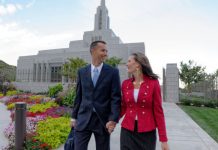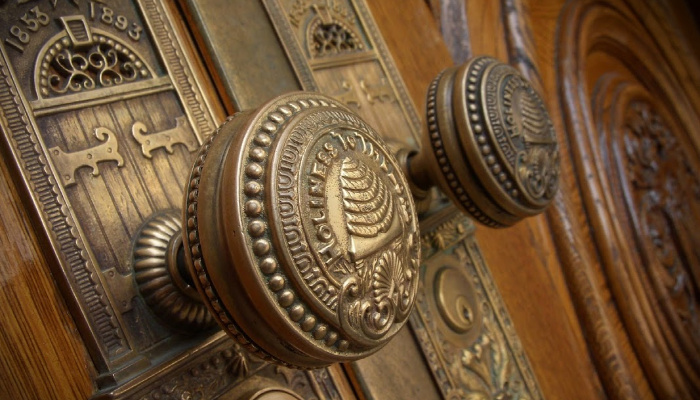
Temples of The Church of Jesus Christ of Latter-day Saints might seem awfully mysterious to those who haven’t been inside one before. That’s truly unfortunate because it leads many people to believe we’re a religion with something to hide. The fact is that there are some things we consider extremely sacred and don’t share outside the temple, but we’re also anxious for everyone in the world to experience the full mystery of the temple firsthand. It’s one of the reasons we have tens of thousands of missionaries throughout the world.
There are a few aspects of the temple so sacred we’re asked not to discuss them publicly. But sometimes we Latter-day Saints interpret that to mean we can’t talk about most anything we do in the temple. That’s simply not true. So, while there are a few things I can’t won’t talk about here, most of what we do in the temple is shareable. In fact, most of the more detailed descriptions of temple worship included in this article are quotes from scripture and modern Latter-day Saint leaders. Combined with images published by the Church itself, let’s take a look at the rooms included in every temple around the world, and what we do in each one of them. But before we get to that…
What you need to know going into this
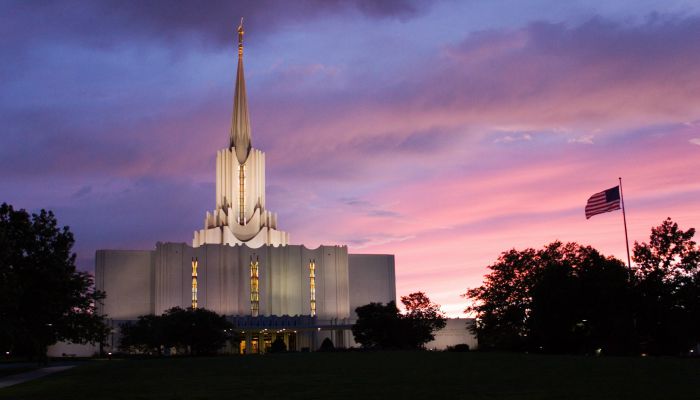
After a temple is constructed, a series of public open houses are held. The public gets to take a tour of the new building before it is officially “dedicated” and becomes operational. Each of the photos in this article were taken before the temple’s dedication. After a temple is dedicated, photography is not allowed.
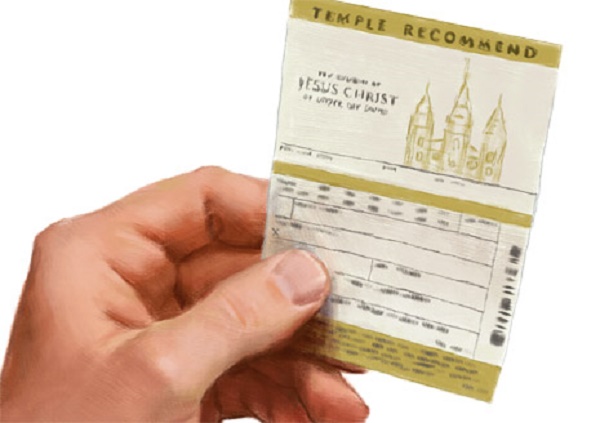 In temples, Latter-day Saints perform ordinances. An ordinance “is a sacred, formal act performed by the authority of the priesthood.” Some ordinances happen in temples, some don’t. Baptism and participating in the sacrament are examples of ordinances that happen outside a temple. In order to take part in temple ordinances, participants must be baptized members of The Church of Jesus Christ of Latter-day Saints and they must be living in accordance with qualifying commandments. Individuals who meet the criteria are given a “temple recommend” card that grants them access to any temple in the world.
In temples, Latter-day Saints perform ordinances. An ordinance “is a sacred, formal act performed by the authority of the priesthood.” Some ordinances happen in temples, some don’t. Baptism and participating in the sacrament are examples of ordinances that happen outside a temple. In order to take part in temple ordinances, participants must be baptized members of The Church of Jesus Christ of Latter-day Saints and they must be living in accordance with qualifying commandments. Individuals who meet the criteria are given a “temple recommend” card that grants them access to any temple in the world.
Let’s start from the very beginning—the entryway
When you enter any given temple, you’ll begin in an entryway similar to those in the photographs above. There will be volunteers in white clothing (suits for men, dresses for women) waiting for you at the desk. You’ll present your temple recommend card, and a temple worker will get you checked in. Unless of course, you don’t have a recommend. In which case they pull a lever, opening up the floor beneath you and dropping you into a pit of hungry alligators. Or they might just politely ask you to admire the temple from the outside. But if you do have a recommend and get checked in, you’ll then have the opportunity to participate in a variety of temple ordinances, depending on your age and needs.
A word on clothing
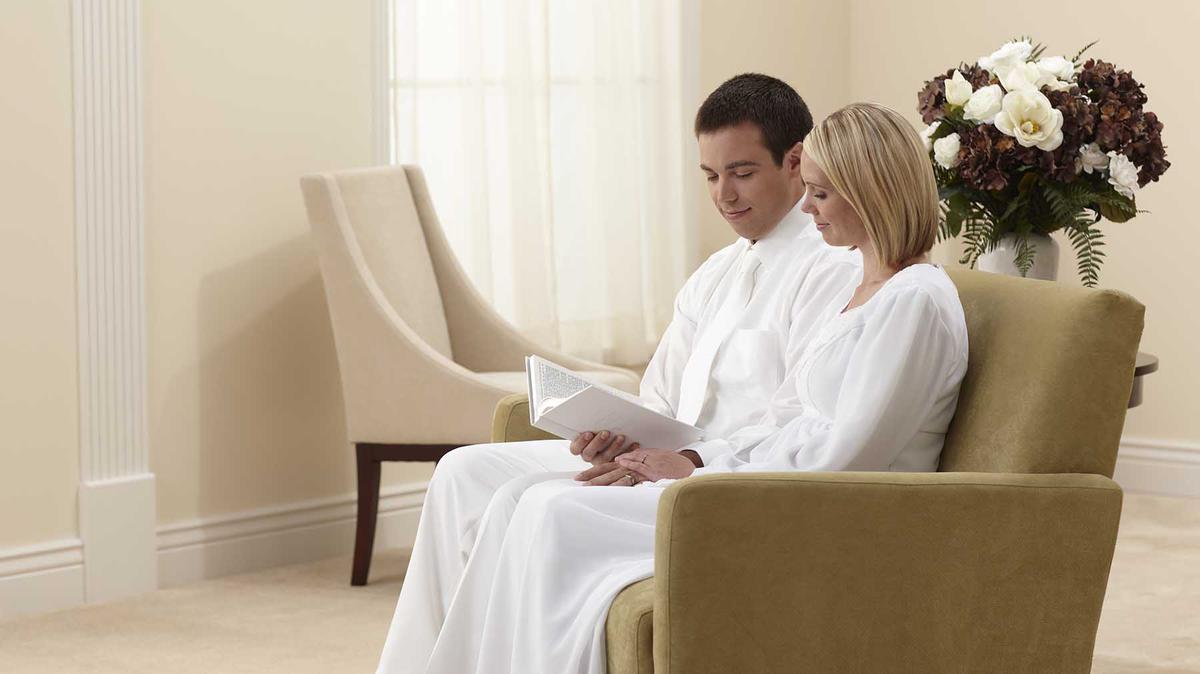
Temple patrons wear different clothing in different parts of the temple. So as to avoid confusion, here’s a quick guide:
Sunday best: When you go to the temple, you wear your “Sunday best.” There’s nothing particularly special about this clothing other than the fact that wearing it shows a measure of respect to Lord when entering His house. This is the same kind of clothing you’d see Latter-day Saints wearing to church on Sunday.
White temple clothing: After you’ve entered the temple in your Sunday best, you’ll probably head to a locker room (a really nice locker room) where you’ll change into white temple clothing (like the people in the photo above).
The Temple Garment: We’ll talk more about this later.
Sacred ceremonial temple clothing: We’ll also talk more about this later, but understand that sacred temple clothing is different than white temple clothing. Sacred temple clothing is worn over white temple clothing.
Alright, now that we’re all on the same page, let’s take a trip through the temple:
The baptistry
Youth as young as 11 years old can help perform what Latter-day Saints call “baptisms for the dead.” Jesus Christ taught that “Except a man be born of water and of the Spirit, he cannot enter into the kingdom of God.” But what happens to all of those people throughout history that never had the opportunity to be baptized? Are they destined to inherit an eternal Hell on a technicality? We don’t think so.
In this ordinance room, recommend-holders can participate in vicarious (or proxy) baptisms for people (preferably their own ancestors) who have passed on without having the opportunity. We believe the spirits of those ancestors will then have the opportunity to accept or reject that vicarious ordinance.
You’ll notice the unique style of the baptismal font. To our modern sensibilities, it might look a little strange, but it is meant to mirror the “molten sea” of Solomon’s temple as described in 1 Kings 7:25 of the Old Testament,
And he made a molten sea … It stood upon twelve oxen, three looking toward the north, and three looking toward the west, and three looking toward the south, and three looking toward the east: and the sea was set above upon them, and all their hinder parts were inward.
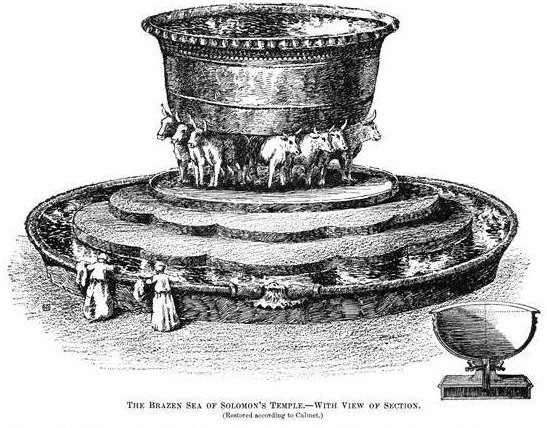
For vicarious baptisms, patrons change into white clothes (customarily a simple white jumpsuit) and enter the baptismal font. There, a volunteer will baptize the patron in behalf of the deceased person. The patron is usually baptized several times for several different people all within a few minutes.
After the baptisms are performed, that same patron must be “confirmed” for each of those people. The Bible instructs that soon after baptism, those with priesthood authority lay their hands on the newly-baptized person’s head and bless them to receive the gift of the Holy Ghost (Acts 8:14-17, Acts 19:1-6). Nowadays, this usually happens in a small room (below) adjacent to the temple baptismal font after the patron has changed into dry clothing.
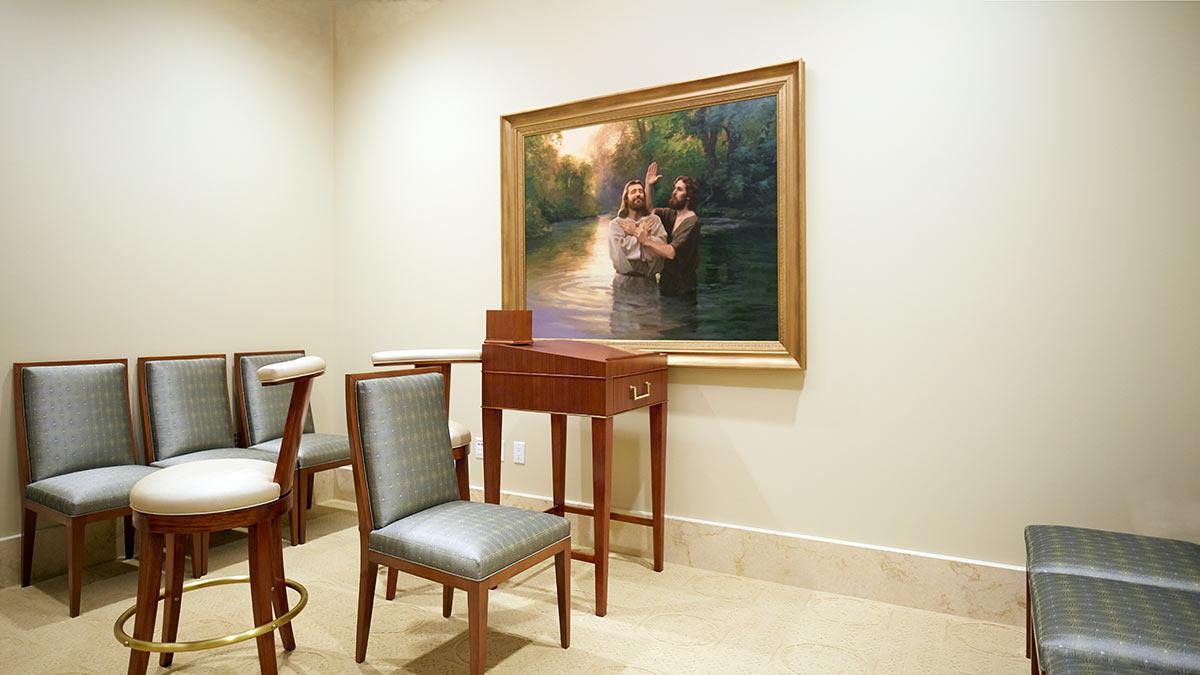
Regular baptisms (not baptisms for the dead) happen in a normal meetinghouse font. Regular confirmations take place during church meetings on Sunday, usually in the chapel. If you have the opportunity to attend a baptismal service or a confirmation in one of our meetinghouses, take it! You don’t have to be a Latter-day Saint to attend.
Initiatory ordinances and the Temple Garment
In preparation for the priests to enter the temple in ancient times, they would be washed (Leviticus 16:4), would put on sacred garments (Exodus 28:42-43, Genesis 3:7, 10, 21), and they would be anointed with oil. Exodus 40:12-13 describes what that process would look like for Moses’ brother, Aaron:
And thou shalt bring Aaron and his sons unto the door of the tabernacle of the congregation, and wash them with water.
And thou shalt put upon Aaron the holy garments, and anoint him, and sanctify him; that he may minister unto me in the priest’s office.
These ordinances were observed in Old Testament times, but there is also evidence to suggest similar practices continued long after even Christ’s death. In his Five Explanatory Lectures to the Newly Enlightened, the early Christian father, Cyril of Jerusalem (about 386 A.D.), explains how “upon emerging from the tank of holy running water” initiates “were given an anointing” and “put on the garment of the Lord Jesus Christ.”
The divine pattern continues in modern times. The late Boyd K. Packer taught that “In connection with [the ordinances of washing and anointing], in the temple you will be officially clothed in the garment and promised marvelous blessings in connection with it.”
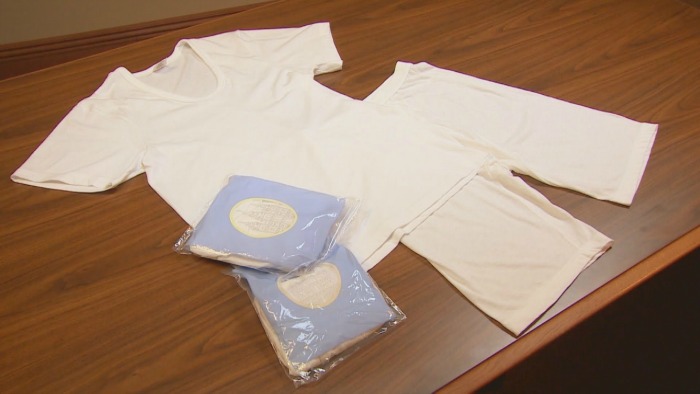
Similar to the confirmations described previously, washings and anointings (also called the initiatory ordinance) happen privately and through the laying on of hands. As President Packer mentioned, the patron wears temple garments (as underclothing to their white temple clothing) while participating in the ordinance. Small amounts (mere drops) of water and oil are also used.
Once a Latter-day Saint has received their own washing and anointing (and the subsequent Temple Endowment), they wear temple garments (as undergarments) throughout their lives as a reminder of the sacred promises they’ve made.
Latter-day Saints participate in a washing and anointing once for themselves. After that, they may repeat the ordinance as often as they wish in behalf of deceased ancestors.
Sacred ceremonial temple clothing
In addition to the temple garments and regular white temple clothing, there’s also a variety of ceremonial temple clothing only worn during the Temple Endowment ceremony. Learn more about it (and temple garments) in the short video below:
Sacred temple clothing may look strange, but each article of clothing has a history and a purpose. Exodus 28-29 describes the strikingly similar clothing worn by ancient priests in the Israelite tabernacle. Here’s a representation of what they may have looked like:
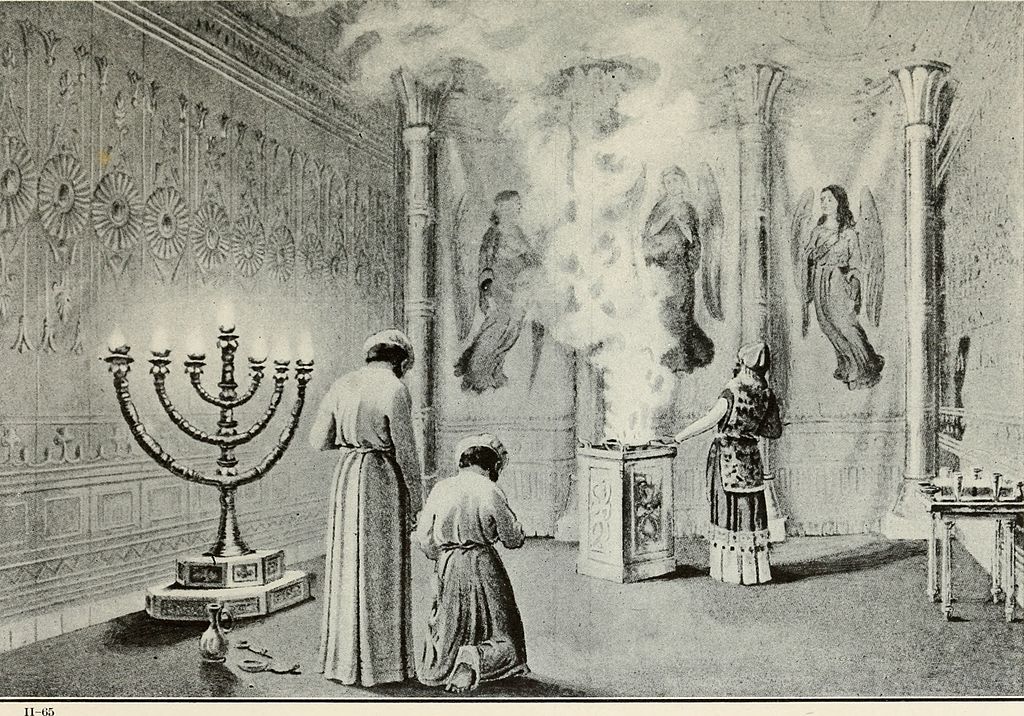
Keep in mind that while there are stunning similarities between ancient and modern temples, most ancient temples operated under the Law of Moses. After Christ fulfilled the Law of Moses, temples continued to be an important aspect of early Christian worship. However, in modern times, those aspects of temple worship having to do with the Law of Moses (i.e. animal sacrifice) no longer occur.
The Endowment ceremony
The Temple Endowment ordinance begins in a room similar to those in the slideshow above. James E. Talmage described the Endowment thusly:
The Temple Endowment, as administered in modern
temples, comprises instruction relating to the significance
and sequence of past dispensations, and the importance of
the present as the greatest and grandest era in human
history. This course of instruction includes a recital of the
most prominent events of the creative period, the condition
of our first parents in the Garden of Eden, their
disobedience and consequent expulsion from that blissful
abode, their condition in the lone and dreary world when
doomed to live by labor and sweat, the plan of redemption
by which the great transgression may be atoned, the
period of the great apostasy, the restoration of the Gospel
with all its ancient powers and privileges, the absolute and
indispensable condition of personal purity and devotion
to the right in present life, and a strict compliance with
Gospel requirements.(James E. Talmage, The House of the
Lord [Salt Lake City: Bookcraft, 1962], pages 99–100.)
One may participate in the Temple Endowment ordinance for one’s self (only once) or vicariously for a deceased individual (similar to baptisms for the dead).
In simple terms, the presentation of the endowment illustrates, generally in video format, the story of the creation, and Adam and Eve. If you’ve read Genesis chapters 1-3, you’re already familiar with about seventy percent of the endowment. The symbolism is rich, but in a nutshell, the endowment explains why we’re separated from God and how Jesus Christ enables us to return to His presence and become like Him. This happens through storytelling, covenants (promises with God to obey His commandments), instruction, symbols, and prayer. Specifically, we covenant to:
- Obey God’s commandments.
- Live the gospel of Jesus Christ.
- Be morally pure.
- Dedicate our time and talents to the Lord’s service.
Ancient temples had multiple rooms, as do modern temples. And just like ancient temples, patrons’ progression through temple rooms during the Temple Endowment symbolizes our journey towards God’s presence.
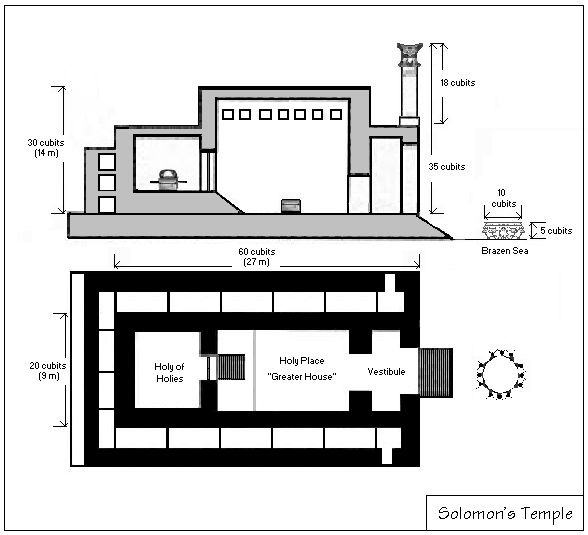
Israel’s tabernacle and Solomon’s temple both featured an outer courtyard, a “Holy Place,” and a “Most Holy Place” (the Holy of Holies). Anciently, a veil separated the Holy Place from the Most Holy Place (Exodus 26:33). In order to pass from one area to the next (symbolic of our journey towards God), one had to pass through the veil. As the endowment presentation and ceremony progresses in modern times, patrons may pass through multiple instruction rooms (depending on the size of the temple), but in order to reach the most sacred room, symbolic of Heaven, they must pass through that which the ancients passed through. Below are a few photographs of what this final, “Celestial Room,” looks like in different temples:
No formal instruction happens in the Celestial Room. It is a place for personal meditation, prayer, and revelation. Once a patron exits the Celestial Room, they change back into their Sunday best (there are dressing rooms for this) and generally head home.
Sealing Room
But we‘re not done yet, because there are still a couple of rooms we haven’t covered. The gallery above shows several Sealing Rooms from different Latter-day Saint temples. In these rooms, marriages are performed. Temple recommend-holding guests fill the seats on either side of the altar, dressed in their Sunday best. The bride and groom, dressed in ceremonial temple clothing, “will kneel on opposite sides of an altar in the sealing room” while a temple worker called a Sealer officiates in the ordinance. The bride may wear her wedding dress instead of her regular white temple dress, if the wedding dress meets certain criteria.
At the altar, bride and groom make promises to each other and God and are sealed together as husband and wife not only for this life but for time and all eternity, as long as each person stays true to their promises. Traditionally, the ceremony concludes with a kiss (because why not?).
Through this ordinance, children can also be sealed to their parents for eternity. Smaller sealing rooms are also available for vicarious sealing ordinances.
Bride’s Room
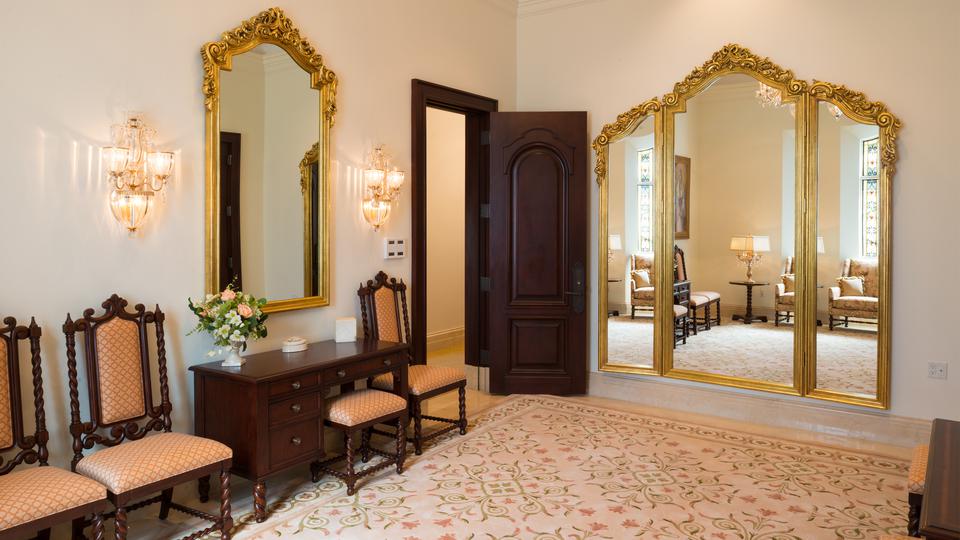
Oh, also, above is a “Bride’s Room.” Brides like to exit the temple wearing their wedding dress, so they get a special dressing room to change in. Very fancy. The groom gets a locker. No complaints.
Modern revelation and changes in temple ceremonies
Temple practices and ordinances as we know them now did not burst into existence all at once. It’s been a revelatory process (and one that continues today). In fact, on January 2, 2019, the First Presidency reiterated,
“Over these many centuries, details associated with temple work have been adjusted periodically, including language, methods of construction, communication, and record-keeping. Prophets have taught that there will be no end to such adjustments as directed by the Lord to His servants.”
And that’s the temple!
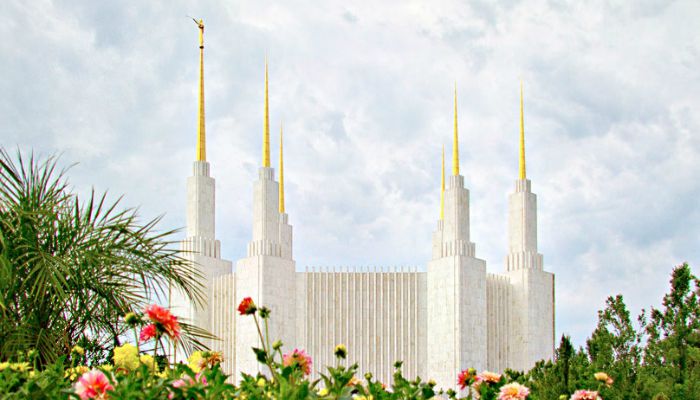
These are extremely sacred buildings where we participate in extremely sacred ordinances. From the outside (and even from the inside), temple ordinances can seem a little strange. That’s totally understandable. To many people, prayer is strange, communion is strange, baptism is strange. Most foreign things appear to be strange at first. Temple ordinances and worship have deep roots in ancient Jewish mysticism. It’s no wonder it seems strange to our modern Western sensibilities.
If you’re not a Latter-day Saint, please try to treat the temple with the utmost reverence and respect nonetheless. It is extremely important in our faith, and extremely sacred. Several temples around the world are under construction as we speak. If you have the opportunity, do whatever you can to experience the beauty and majesty of these awe-inspiring structures with your own eyes at an open house near you.


